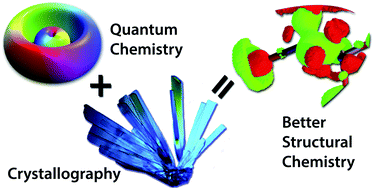X-ray wavefunction refinement and comprehensive structural studies on bromo-substituted analogues of 2-deoxy-d-glucose in solid state and solution†
Abstract
The structural studies on two bromo-substituted derivatives of 2-deoxy-D-glucose (2-DG), namely 2-deoxy-2-bromo-D-glucose (2-BG) and 2-deoxy-2-bromo-D-mannose (2-BM) are described. 2-DG itself is an inhibitor of hexokinase, the first enzyme in the glycolysis process, playing a vital role in both cancer cell metabolism and viral replication in host cells. Because of that, 2-DG derivatives are considered as potential anti-cancer and anti-viral drugs. An X-ray quantum crystallography approach allowed us to obtain more accurate positions of hydrogen atoms by applying Hirshfeld atom refinement, providing a better description of hydrogen bonding even in the case of data from routine X-ray experiments. Obtained structures showed that the introduction of bromine at the C2 position in the pyranose ring has a minor influence on its conformation but still, it has a noticeable effect on the crystal structure. Bromine imposes the formation of a layered supramolecular landscape containing hydrogen bonds, which involves the bromine atom. Periodic DFT calculations of cohesive and interaction energies (at the B3LYP level of theory) have supported these findings and highlighted energetic changes upon bromine substitution. Based on molecular wavefunction from the refinement, we calculated the electrostatic potential, Laplacian, and ELI-D, and applied them to charge-density studies, which confirmed the geometry of hydrogen bonding and involvement of the bromine atom with these intermolecular interactions. NMR studies in the solution show that both compounds do not display significant differences in their anomeric equilibria compared to 2-DG, and the pyranose ring puckering is similar in both aqueous and solid state.



 Please wait while we load your content...
Please wait while we load your content...